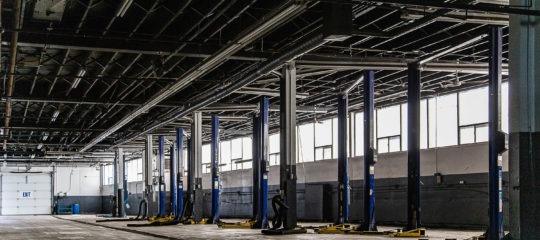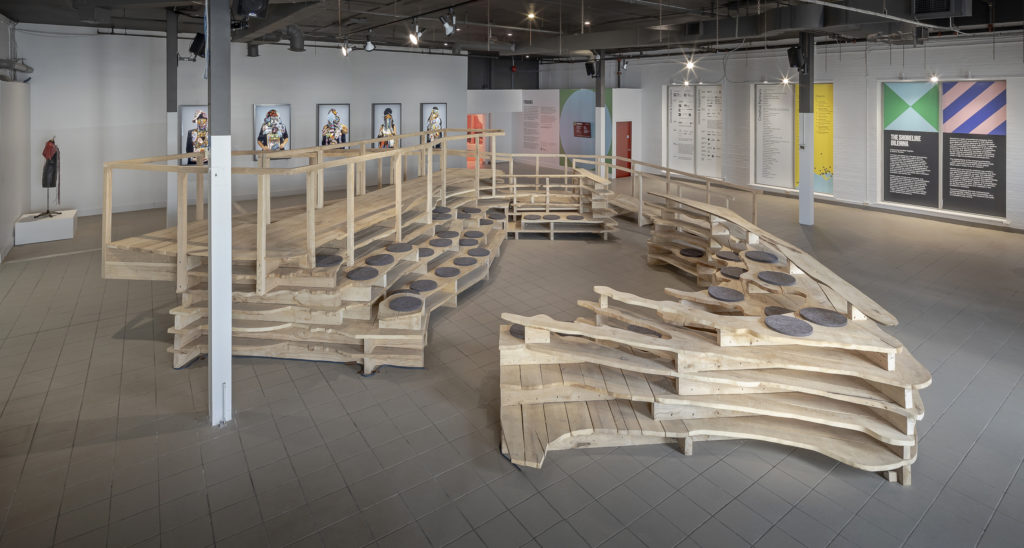September 21 – December 1, 2019
The ancient Greek term isonomia implies political equality. Blackwell’s two site-responsive, non-hierarchical structures at the Biennial are spaces to gather for weekly programs and contemplate isonomia in the face of colonial governance structures that have overtaken those of Indigenous peoples. At 259 Lake Shore, Isonomia in Toronto? (harbour) is modelled after Toronto’s changing shoreline, illustrating the effects of encroaching privatization on the land. For Blackwell, the transformation of the property lines along the shore is a marker of colonial violence, the form of law and order that now dominates this land.
Production Assistance: Daniel Abad. Construction: Daniel Abad, Adrian Blackwell, Christopher Mendoza, Geoff Tanner. Lumber: Sawmill Sid. Structural: Christian Bellini (Blackwell Engineering). Accessibility: Luke Anderson (StopGap).
Commissioned by the Toronto Biennial of Art.
Isonomia in Toronto? (creek), a related installation by Blackwell, is currently on view at Small Arms Inspection Building.
Bio
Adrian Blackwell (born and lives in Toronto, Canada) is a settler artist, urban designer, theorist and educator. Adrian’s practice focuses on the relation between physical spaces and political, economic forces. His work has been featured in exhibitions such as the Chicago Architecture Biennial (2019); the Chengdu Biennale (2011); and the Shenzhen Biennale of Urbanism/Architecture (2005). Adrian is associate professor of architecture at the University of Waterloo and co-editor of the 2021 issue of Scapegoat: Architecture / Landscape / Political Economy titled “c\a\n\a\d\a: delineating nation state capitalism.”
Learn more about Adrian Blackwell’s practice by listening to the Toronto Biennial of Art Podcast “Short Format” – season 1, episode 5 – available on Apple Podcasts, Google Podcasts, and Spotify.
Exhibition Site
259 Lake Shore Blvd East
The life of this nondescript building reveals the area’s economic history. Its first tenant in 1945, the Standard Chemical Company, produced methanol, formaldehyde, and charcoal. A railway line to the south tethered the site to the movement of goods. By 1954, the building was divided into a warehouse and a showroom, a configuration that remained intact over the course of various leaseholders, including oil and electrical supply companies and a series of car dealerships. (The advertising of its most recent tenant, Volvo, is still visible on the façade.) This building’s fate is indeterminate, as real estate development is increasingly filling the voids left by industrial decline.

259 Lake Shore Blvd East
Toronto ON
M5A 3T7

